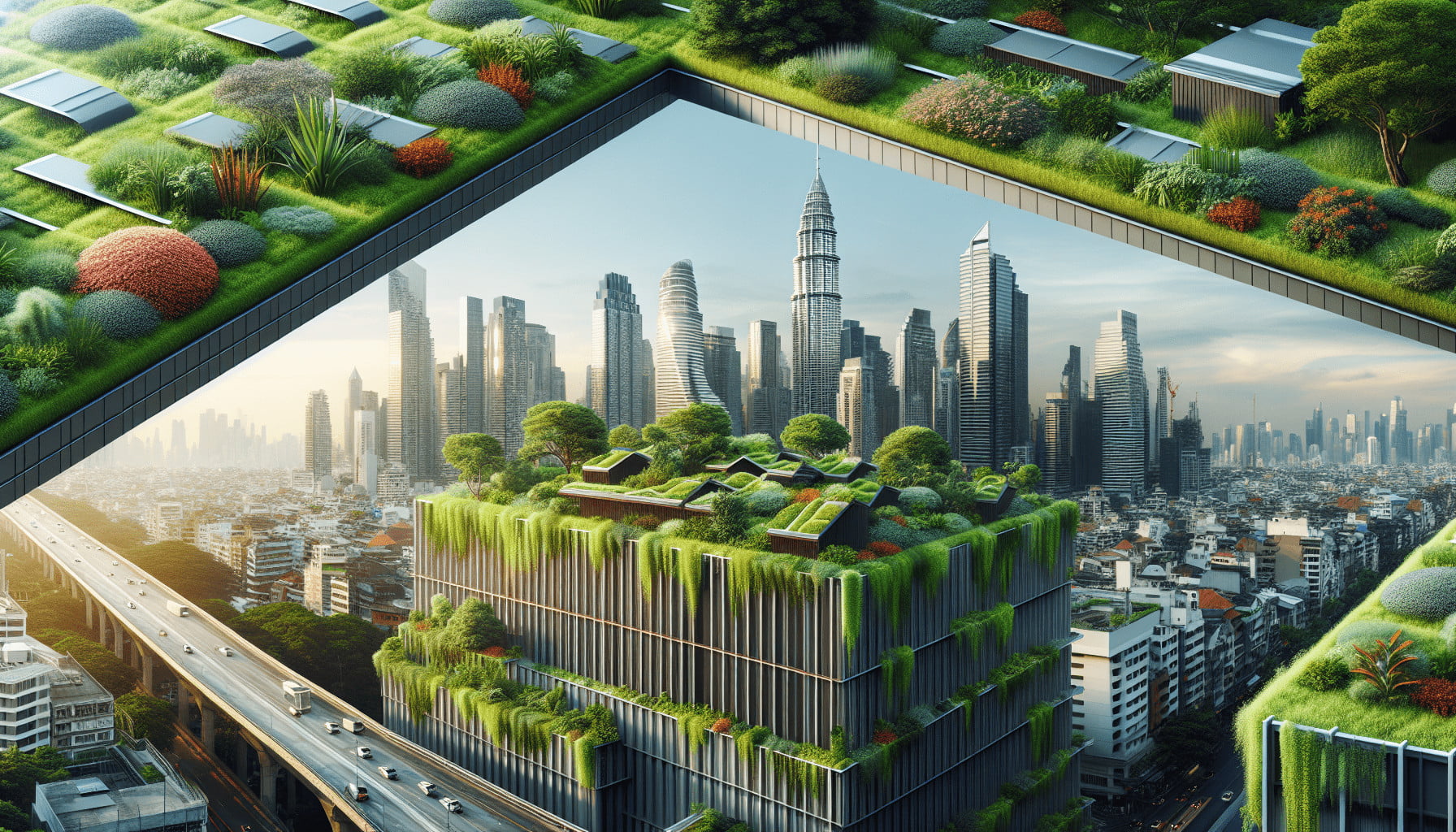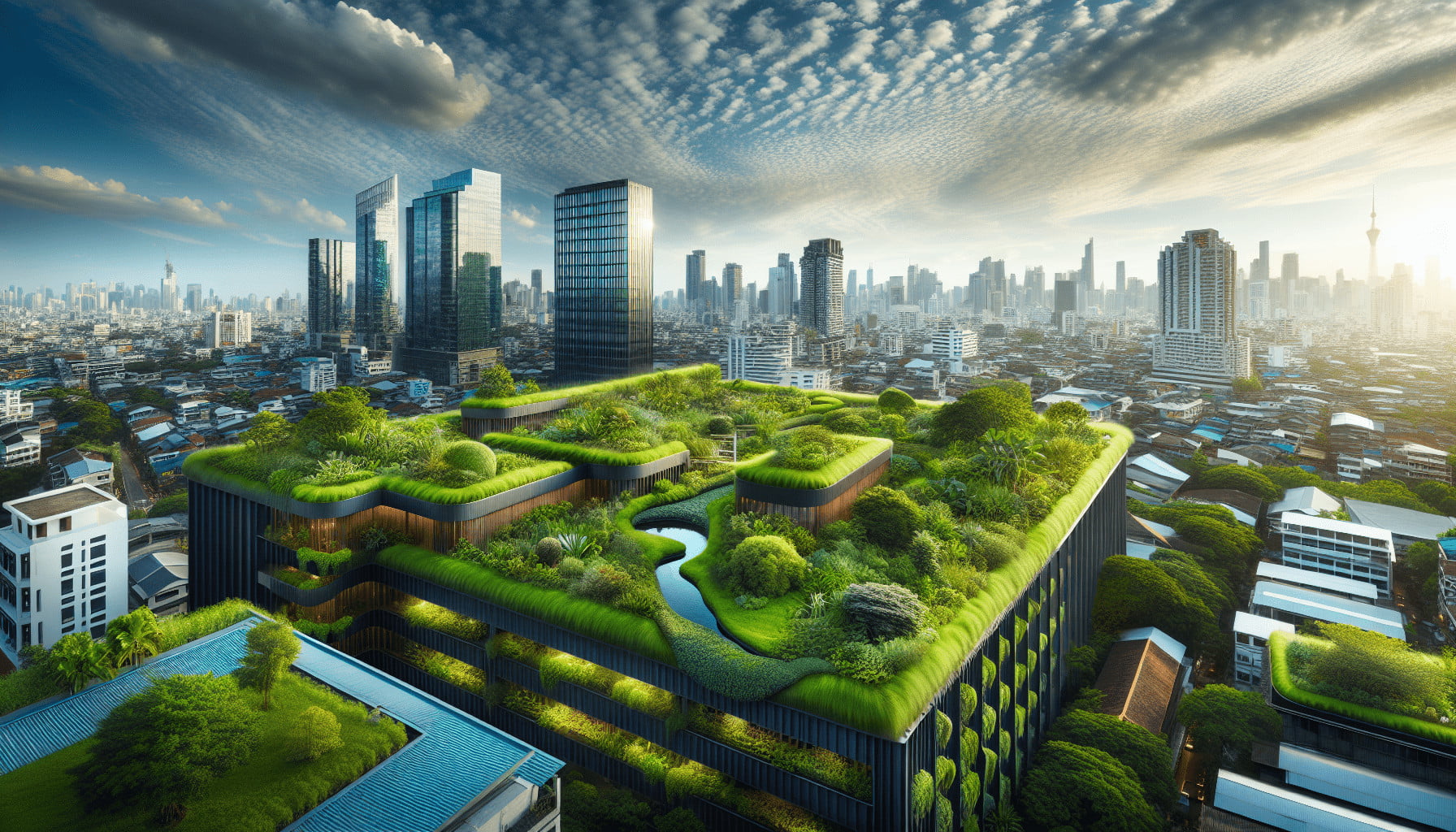Welcome to a journey where innovative green roof systems meet sustainable drainage solutions, transforming urban landscapes into eco-friendly havens. In “Sustainable Drainage Solutions For Green Roof Systems,” you’ll uncover the ways these advanced designs not only enhance urban aesthetics but also effectively manage stormwater, reduce flooding, and support biodiversity. Embrace the beauty and functionality of green roofs while learning how they contribute to a resilient and sustainable future for our cities. Have you ever wondered how to achieve a perfect balance between urban development and nature? With climate change and urbanization on the rise, it’s crucial to find solutions that can tackle stormwater management effectively. Welcome to the world of Sustainable Drainage Solutions for Green Roof Systems, where you’ll discover how innovative designs can transform rooftops into eco-friendly havens.

What Are Green Roof Systems?
Green roof systems are innovative, eco-friendly roofing solutions where a vegetative layer is grown on a rooftop. They are not only aesthetically pleasing but also help in mitigating urban heat island effects, managing stormwater, and improving air quality.
Types Of Green Roof Systems
There are mainly two types of green roof systems:
1. Extensive Green Roofs:
- Thin growing medium (usually 2-6 inches)
- Low maintenance and cost-effective
- Support drought-tolerant plants like sedums
2. Intensive Green Roofs:
- Thicker growing medium (6 inches to several feet)
- Higher maintenance and cost
- Can support a diversity of plants, including shrubs and small trees
Benefits of Green Roofs
Green roofs offer numerous benefits, including:
- Stormwater Management: Significantly reduces runoff and delays peak flows.
- Thermal Performance: Provides additional insulation, reducing energy costs.
- Biodiversity: Supports habitats for insects and birds.
- Aesthetic Value: Enhances urban landscape and property values.
Why Sustainable Drainage?
Sustainable drainage systems (SuDS) are essential for green roofs as they provide efficient stormwater management, reducing the risk of flooding, and improving water quality through natural filtration.
The Importance of Sustainable Drainage
- Flooding Prevention: Manages excess rainwater effectively, reducing flood risks.
- Water Quality Improvement: Filters pollutants from rainwater, ensuring that the runoff entering waterways is cleaner.
- Ecosystem Support: Provides moisture for vegetation which, in turn, supports local wildlife.
Components of Sustainable Drainage Systems
SuDS involves various components working together to manage stormwater efficiently. Let’s break them down:
Vegetative Layer
The primary component, this layer, helps in absorbing rainwater and reducing runoff. It also plays a crucial role in filtering out pollutants.
Growing Medium
This layer retains moisture, provides nutrients to the plants, and ensures proper drainage. The depth and composition of the growing medium are crucial for the sustainability of the green roof.
Drainage Layer
The drainage layer ensures that excess water is efficiently drained away to prevent waterlogging, which can harm the vegetation.
Filter Membrane
A filter membrane separates the growing medium from the drainage layer, preventing the fine particles from clogging the drainage system.
Waterproofing Membrane
This membrane is vital to protect the structural integrity of the building by preventing water from penetrating the roof.
Vegetation Selection
Choosing the right plants is essential for the success of a sustainable drainage solution. Drought-resistant and native plants are ideal as they require less maintenance and water.
How SuDS Work on Green Roofs
SuDS on green roofs work by slowing down the movement of rainwater and allowing it to be absorbed and filtered naturally by the vegetation and soil layers.
Process Breakdown
- Initial Absorption: Rainwater hits the roof and is absorbed by the vegetation and growing medium.
- Filtration: As water moves through the soil, it is naturally filtered, removing pollutants.
- Drainage: Excess water reaches the drainage layer and is efficiently directed away.
- Evapotranspiration: Plants use some of the water for growth and release water vapor into the atmosphere, further reducing runoff.

Designing Effective SuDS for Green Roofs
Designing an effective SuDS for green roofs requires careful planning and consideration. Here are some key factors to think about:
Site-Specific Conditions
Assess the site conditions, including climate, rainfall patterns, and building structure, to determine the best SuDS design.
Depth of Growing Medium
The depth of the growing medium should match the type of vegetation to ensure optimal growth and efficient water management.
| Vegetation Type | Growing Medium Depth |
|---|---|
| Sedums and Grasses | 2-6 inches |
| Perennials and Shrubs | 6-12 inches |
| Trees and Large Shrubs | 12 inches and above |
Drainage Requirements
Proper drainage is crucial to prevent waterlogging and ensure the longevity of the green roof. Consider the slope and drainage capacity of the roof when designing the system.
Waterproofing Strategies
Employ high-quality waterproofing membranes to protect the building structure from water damage. Regular inspections and maintenance are also essential to ensure the membrane’s effectiveness.
Implementing SuDS in Urban Areas
Urban areas pose unique challenges for sustainable drainage solutions, but with innovative design and planning, green roofs can be highly effective.
Retrofitting Existing Buildings
Retrofitting green roofs on existing buildings can be a sustainable way to improve stormwater management and enhance the urban landscape. Assess the structural capacity of the building and adapt the design to fit existing conditions.
New Developments
Incorporate green roofs and SuDS into the planning stages of new developments to ensure efficient stormwater management from the start.
Case Studies of Successful SuDS Implementations
Learning from successful implementations can provide valuable insights and best practices for designing and managing SuDS.
Example 1: The Nanyang Technological University, Singapore
The Nanyang Technological University has implemented an extensive green roof system that includes a variety of SuDS components. This green roof has significantly reduced stormwater runoff, improved thermal performance, and enhanced the biodiversity of the campus.
Example 2: The Christie’s Headquarters, London
The Christie’s Headquarters in London boasts an intensive green roof system that not only manages stormwater effectively but also provides a recreational space for employees. The combination of a robust drainage system and diverse vegetation has made this green roof a model example in urban settings.
Maintenance of SuDS and Green Roof Systems
Regular maintenance is vital to ensure the long-term effectiveness of SuDS and green roofs.
Routine Inspections
Conduct regular inspections to:
- Check for any signs of waterlogging or drainage issues.
- Assess the condition of the waterproofing membrane.
- Monitor the health of the vegetation.
Seasonal Maintenance
Adjust maintenance practices according to the seasons. For instance:
- Perform more frequent inspections during rainy seasons.
- Provide additional care to plants during dry periods to prevent drought stress.
Replacement and Repairs
Promptly address any damages or wear and tear in the SuDS and green roof components to maintain their efficiency.
Challenges and Solutions in SuDS for Green Roofs
Implementing sustainable drainage solutions on green roofs comes with certain challenges, but with proper planning, these can be overcome.
Weight Load Factors
Green roofs add extra weight to buildings, which may limit their application. Conduct a structural assessment to ensure the building can support the additional load.
Climate Adaptation
Different climates demand specific SuDS designs. Adapting the components to local conditions ensures optimal performance.
Cost
Initial installation costs for SuDS and green roofs can be high. However, the long-term benefits in terms of energy savings, stormwater management, and ecological impact can offset these costs.
Future Trends in Sustainable Drainage Solutions
As our understanding of environmental sustainability increases, new trends and innovations are emerging in the realm of SuDS for green roofs.
Smart Drainage Systems
The integration of smart technology into SuDS allows for real-time monitoring and management of stormwater, optimizing performance and maintenance.
Hybrid Systems
Combining SuDS with other sustainable technologies, such as solar panels and rainwater harvesting systems, can enhance the ecological benefits of green roofs.
Community Involvement
Engaging local communities in the design and maintenance of green roofs can foster a sense of ownership and promote environmental awareness.
Conclusion
Sustainable drainage solutions for green roof systems are an effective way to address urban stormwater management challenges while providing numerous ecological and social benefits. By carefully planning, implementing, and maintaining SuDS, you can create green roofs that not only withstand the test of time but also enhance the resilience and beauty of urban environments. Whether you’re retrofitting an existing building or planning a new development, these innovative solutions pave the way for a sustainable future.
By understanding and implementing these strategies, you can play a crucial role in promoting sustainable urban development and protecting our environment for generations to come. So, take a step towards greener cities and consider integrating sustainable drainage solutions into your projects today.
